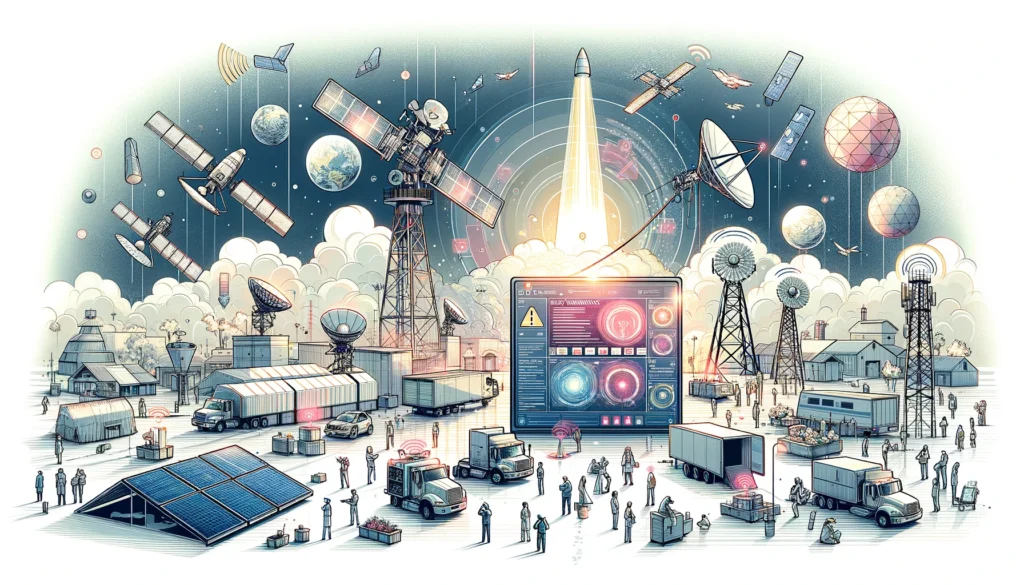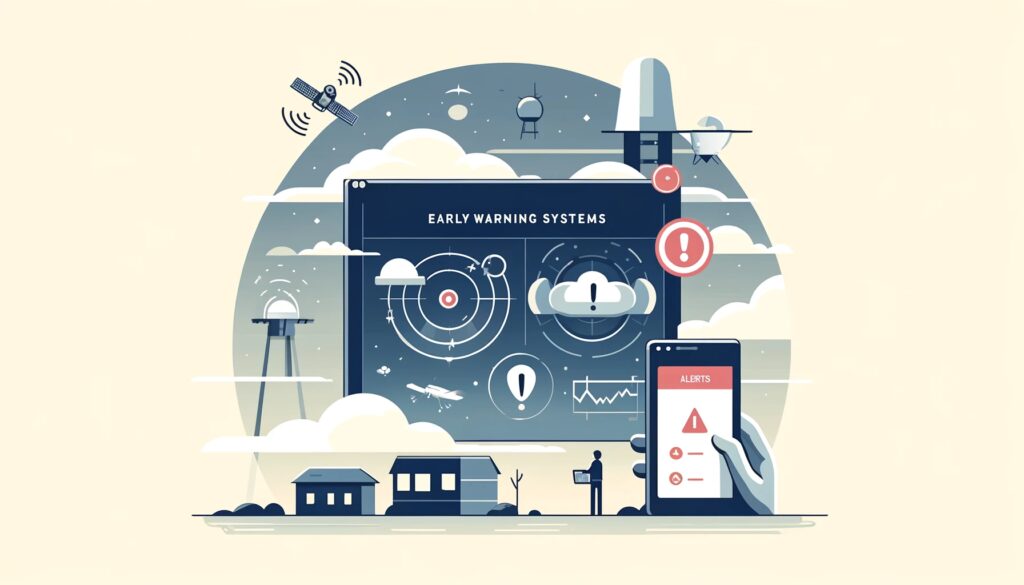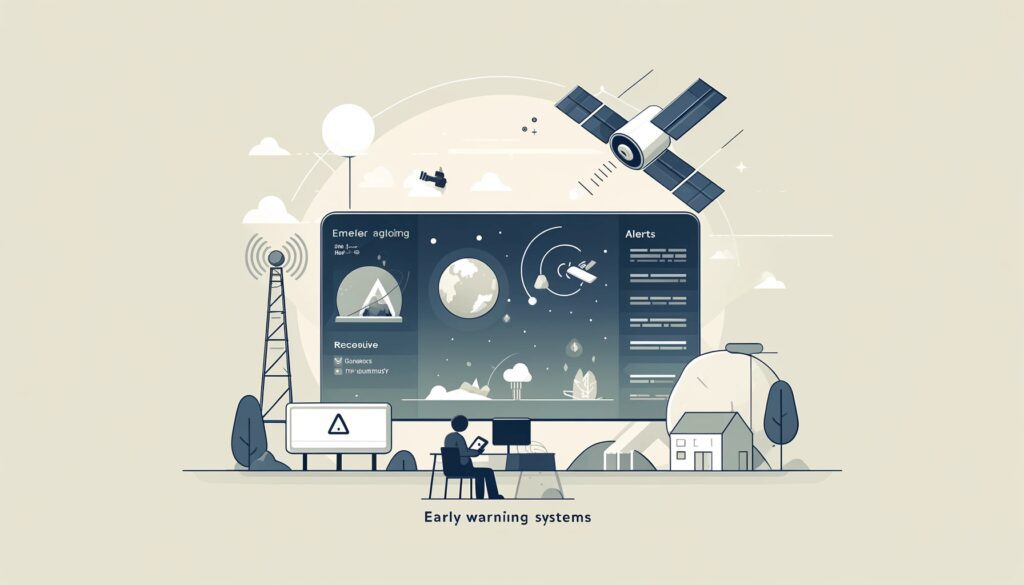
AI in Disaster Management: Enhancing Preparedness and Resilience
Introduction to AI in Disaster Management
Artificial Intelligence (AI) is transforming the landscape of disaster preparedness and resilience. Imagine predicting natural disasters with unparalleled accuracy, enabling proactive measures long before calamity strikes. This is not a futuristic fantasy—it’s the new reality thanks to AI’s incredible capabilities. The potential for AI to revolutionize disaster management is immense, providing tools and insights that were once unimaginable.
As climate change intensifies and natural disasters become more frequent, leveraging advanced technologies like AI is crucial. From forecasting hurricanes to optimizing resource allocation during floods, AI is becoming an essential ally in combating nature’s unpredictable fury.
Early Warning Systems
One of the most significant advancements AI offers is in early warning systems. These systems analyze real-time data from a variety of sources including sensors, satellite imagery, and even social media feeds. By doing so, they provide highly accurate and timely disaster warnings. For instance, AI algorithms can detect subtle precursors to earthquakes, giving precious minutes or even hours of warning that can save countless lives.
Consider this: a brewing storm thousands of miles away can be detected early, and its potential impact can be forecasted with remarkable precision. This early detection facilitates timely evacuations and the mobilization of emergency resources, significantly reducing the disaster’s impact. It’s akin to having a digital crystal ball that keeps emergency services and communities one step ahead of nature’s wrath.
Predictive Analytics
Harnessing Historical Data
The power of predictive analytics in disaster preparedness is nothing short of revolutionary. By analyzing historical data and utilizing sophisticated machine learning algorithms, AI can forecast various disaster scenarios. This extends beyond predicting where a hurricane might land to understanding broader implications like likely flood zones and affected populations.
Proactive Resource Allocation
These insights are vital for pre-positioning resources such as food, water, and medical supplies. Imagine predicting with high accuracy which areas will need the most support and ensuring these resources are available well in advance. This proactive approach minimizes chaos and ensures help reaches those in need swiftly.

Real-Time Data Analysis
AI excels in real-time data analysis, a crucial capability during the chaos of a disaster. Traditional data processing methods can be slow and cumbersome, but AI swiftly analyzes vast amounts of data from various sources. Whether it’s satellite imagery, weather station data, or social media posts, AI identifies patterns and anomalies that might signal an impending disaster.
For example, during a wildfire, AI can analyze real-time data to predict the fire’s spread, allowing firefighters to allocate resources more effectively and protect vulnerable areas. Similarly, during a flood, AI assesses real-time rainfall data, river levels, and soil moisture to predict at-risk areas and promptly alert authorities. This responsiveness can make the difference between a well-managed emergency and a catastrophic event.
Key Points Visualization
Predictive Analytics Process:
- Data Collection: Historical disaster data, environmental conditions, real-time sensor inputs.
- Data Analysis: Machine learning algorithms process data to identify patterns and predict future events.
- Forecasting: AI models predict likely disaster scenarios and their impacts.
- Resource Allocation: Insights used to pre-position resources and plan evacuations.
Real-Time Data Analysis:
- Sources: Satellite imagery, weather station data, social media posts.
- Processing: AI analyzes data to identify patterns and anomalies.
- Application: Predicting fire spread, assessing flood risk, directing emergency resources.
AI in Infrastructure Planning
Resilient Design
AI can play a crucial role in designing and planning resilient infrastructure. By analyzing geographic, demographic, and historical disaster data, AI helps engineers and urban planners develop structures that can withstand natural disasters. This includes everything from bridges and buildings to entire urban layouts. The goal is to create infrastructure that not only endures the immediate impact of disasters but also facilitates quicker recovery.
Maintenance and Monitoring
AI’s predictive capabilities are also instrumental in maintaining and monitoring existing infrastructure. For instance, AI systems can predict when maintenance is required based on data from various sensors embedded in infrastructure. This proactive approach prevents catastrophic failures and ensures the longevity and resilience of critical infrastructure. By continuously monitoring the condition of bridges, roads, and buildings, AI helps mitigate risks before they escalate into full-blown disasters.
Resource Optimization
Efficient Use
In disaster management, efficient use of resources is paramount. AI-driven strategies can significantly optimize resource allocation during and after disasters. For example, AI can analyze patterns of previous disaster responses to identify the most effective ways to distribute resources like food, water, and medical supplies. This ensures that aid reaches those in need more quickly and efficiently, minimizing wastage and duplication of efforts.
Allocation Models
AI develops sophisticated allocation models that predict resource needs based on the type and scale of the disaster. These models consider various factors such as population density, infrastructure, and historical data. By doing so, AI helps emergency responders and humanitarian organizations allocate resources more strategically, ensuring that every unit of aid is used to its fullest potential. This optimization not only enhances immediate disaster response but also aids in long-term recovery efforts.
Enhanced Communication and Coordination
AI Systems
Effective communication and coordination are critical during disasters. AI-powered systems facilitate real-time communication between different response teams, enabling them to share information and coordinate their actions more effectively. These systems use AI to process and analyze incoming data rapidly, providing emergency responders with actionable insights that improve decision-making and response times.
Collaboration Tools
AI-powered collaboration tools enhance the ability of various entities involved in disaster management to work together seamlessly. These tools provide a centralized platform where information can be shared, analyzed, and acted upon in real time. For example, AI can help map affected areas, track resource distribution, and monitor the progress of recovery efforts. This collaborative approach ensures that all stakeholders are on the same page, improving the overall efficiency and effectiveness of disaster response.

AI-Driven Decision Support Systems
Strategic Planning
AI integration in decision support systems (DSS) is transforming disaster management. These systems leverage AI to assist in strategic planning and operational decisions during disasters. By simulating different disaster scenarios and evaluating potential responses, AI-driven DSS provide emergency managers with insights into the best courses of action. This enables more informed and effective decision-making under pressure.
Simulation Models
AI uses simulation models to predict the outcomes of various disaster response strategies. These models consider a multitude of variables, from weather patterns and infrastructure resilience to population movements and resource availability. By running these simulations, AI helps emergency planners anticipate challenges and devise effective mitigation strategies. This forward-thinking approach is crucial for minimizing the impact of disasters and ensuring a swift recovery.
Key Points Visualization:
Resource Optimization Process:
- Data Analysis: Historical response data, current disaster data.
- Model Development: AI creates resource allocation models.
- Resource Distribution: Optimized distribution based on model predictions.
- Efficiency Monitoring: Continuous monitoring and adjustment.
Enhanced Communication and Coordination:
- AI Systems: Real-time data processing, actionable insights.
- Collaboration Tools: Centralized platforms, real-time information sharing.
- Impact: Improved decision-making, coordinated actions.

Image and Video Analysis
Damage Assessment with AI Algorithms
In the aftermath of a disaster, timely and accurate damage assessment is crucial. AI algorithms can analyze images and videos captured by drones and surveillance cameras to assess the extent of infrastructure damage. This technology allows for a swift evaluation of roads, buildings, and bridges, providing emergency responders with a clear picture of the affected areas. By automating the damage assessment process, AI helps prioritize repair efforts and allocate resources where they are most needed.
Enhancing Rescue Operations
AI is also revolutionizing rescue operations. Advanced image and video analysis can identify trapped individuals and hazardous conditions, enabling rescuers to prioritize their efforts effectively. For example, during an earthquake, AI can scan video feeds for signs of life amidst the rubble, directing rescue teams to the most critical locations. This rapid identification process can be the difference between life and death, significantly improving survival rates in disaster-stricken areas.
Autonomous Systems: Robots and Drones
AI-Powered Search and Rescue
One of the most innovative applications of AI in disaster management is the deployment of autonomous robots and drones for search and rescue operations. These AI-powered systems can navigate hazardous environments that are too dangerous for human responders. Equipped with sensors and cameras, they can search for survivors and assess damage in real-time. For instance, drones can fly over flooded areas to locate stranded individuals, while robots can enter collapsed buildings to find those trapped inside.
Real-Time Data Transmission
The ability to transmit data in real-time is a game-changer for disaster response. Autonomous systems equipped with AI can send live updates to command centers, providing crucial information that aids in decision-making. This real-time data transmission ensures that response efforts are coordinated and effective, minimizing delays and enhancing the overall efficiency of the rescue operations. It allows for a dynamic response, adapting to the evolving conditions on the ground.
AI in Post-Disaster Recovery
Assessment and Restoration
Post-disaster recovery is a complex and resource-intensive process. AI plays a pivotal role in assessing the extent of damage and prioritizing recovery efforts. By analyzing data from various sources, AI can provide a comprehensive assessment of the affected area. This helps in formulating effective restoration strategies, ensuring that the most critical infrastructures are rebuilt first. For example, AI can determine which hospitals or schools need immediate attention, facilitating a faster return to normalcy.
Optimizing Resource Allocation
Efficient resource allocation is essential for a successful recovery. AI optimizes the distribution of resources such as funding, materials, and manpower. By predicting future needs and identifying the most affected areas, AI ensures that resources are allocated where they will have the greatest impact. This targeted approach not only speeds up recovery but also reduces costs, making the rebuilding process more sustainable in the long run.
In conclusion, the integration of AI into disaster management—from early warning systems to post-disaster recovery—represents a significant advancement in our ability to handle natural and human-made catastrophes. By leveraging AI’s capabilities, we can enhance our preparedness, response, and resilience, ultimately safeguarding lives and communities.
Community Engagement and Education
AI Tools for Real-Time Information
Engaging communities and educating them about disaster preparedness is crucial for building resilience. AI-powered chatbots and virtual assistants provide real-time information and support to communities, offering guidance on evacuation routes, shelter locations, and safety measures. These AI tools can answer frequently asked questions, disseminate emergency alerts, and offer personalized advice based on individual needs. By ensuring that information is accessible and up-to-date, AI helps communities stay informed and prepared.
AI-Enhanced Preparedness Programs
Educational programs powered by AI are transforming how communities prepare for disasters. AI can create interactive and personalized learning experiences that enhance community preparedness. For instance, AI-driven simulations can help residents understand the impact of various disasters and practice their response strategies in a virtual environment. These programs can be tailored to address specific risks relevant to different regions, ensuring that the training is both relevant and effective.
Risk Mitigation and Prevention
Advanced Data Analysis
AI’s ability to analyze historical data is key to identifying and mitigating potential risks before disasters occur. By examining patterns and trends from past events, AI can predict where and when disasters are likely to happen. This predictive capability allows for the implementation of targeted risk mitigation strategies. For example, AI can analyze flood data to identify vulnerable areas, enabling authorities to strengthen flood defenses and implement early warning systems.
Implementing Preventive Measures
Based on predictive analytics, AI-driven preventive measures can be implemented to reduce the impact of disasters. These measures include infrastructure improvements, such as reinforcing buildings and bridges, and developing better land-use planning to avoid construction in high-risk areas. Additionally, AI can optimize resource allocation for preventive measures, ensuring that funds are used efficiently to maximize the protective benefits.
Ethical Considerations and Challenges
Ensuring Data Privacy and Security
As AI applications become more integrated into disaster management, ensuring data privacy and security is paramount. AI systems often rely on vast amounts of data, including personal information, which must be protected from breaches and misuse. Implementing robust data encryption and adhering to strict privacy regulations are essential steps in safeguarding this information. Transparency in how data is collected and used can also help build trust within communities.
Addressing Algorithm Bias and Fairness
AI systems must be designed to ensure fair and equitable outcomes in disaster response. This involves addressing any potential biases in the algorithms that could disproportionately affect certain populations. Ensuring diverse data sets and regularly auditing AI systems for bias can help mitigate these issues. Additionally, involving a wide range of stakeholders in the development and deployment of AI solutions can ensure that the technology serves all community members equitably.
Future Prospects and Innovations
Emerging AI Technologies
The future of disaster preparedness and resilience is bright with the continued advancement of AI technologies. Innovations such as machine learning, natural language processing, and advanced robotics are poised to further enhance our capabilities. For example, the development of AI systems that can better understand and interpret human language will improve communication during emergencies, making information dissemination more effective.
Importance of Collaboration
Maximizing the benefits of AI in disaster management requires collaboration between technologists, policymakers, and communities. By working together, these groups can ensure that AI technologies are developed and implemented in ways that are both effective and ethical. Policymakers can create regulations that promote the responsible use of AI, while technologists can focus on innovation and communities can provide valuable feedback to guide these efforts.
Incorporating AI into disaster preparedness and resilience strategies offers a promising path forward. With the right approaches and collaborations, AI can significantly enhance our ability to predict, respond to, and recover from disasters, ultimately saving lives and building stronger communities.
Key Takeaways
- Transformative Role of AI: AI significantly enhances disaster preparedness and resilience through its ability to process vast amounts of data, provide early warnings, and improve response times.
- Early Warning Systems: AI-powered systems utilize real-time data from various sources to predict disasters accurately, allowing timely evacuations and reducing casualties and property damage.
- Predictive Analytics: By analyzing historical data and current conditions, AI helps forecast disaster scenarios, enabling efficient resource allocation and proactive measures to mitigate risks.
- AI in Rescue Operations: AI-driven image and video analysis aids in assessing infrastructure damage and identifying trapped individuals, prioritizing rescue efforts and improving survival rates.
- Autonomous Systems: AI-powered robots and drones are invaluable in hazardous environments, conducting search and rescue operations, and transmitting real-time data to aid decision-making.
- Post-Disaster Recovery: AI optimizes recovery efforts by assessing damage, prioritizing restoration, and ensuring efficient resource allocation, thereby accelerating the return to normalcy.
- Community Engagement: AI tools and educational programs enhance community preparedness, providing real-time information and personalized training to build resilience.
- Ethical Considerations: Ensuring data privacy, addressing algorithm biases, and promoting fair and equitable AI applications are crucial for ethical disaster management.
Conclusion
Incorporating AI into disaster preparedness and resilience strategies offers a transformative approach to handling natural and human-made catastrophes. From providing early warnings and predictive analytics to aiding in rescue operations and optimizing recovery efforts, AI’s capabilities are vast and continually evolving. However, as we leverage these advanced technologies, it is imperative to address ethical considerations, ensuring data privacy, fairness, and equitable outcomes for all communities. By fostering collaboration between technologists, policymakers, and communities, we can harness the full potential of AI to create a safer and more resilient future.





